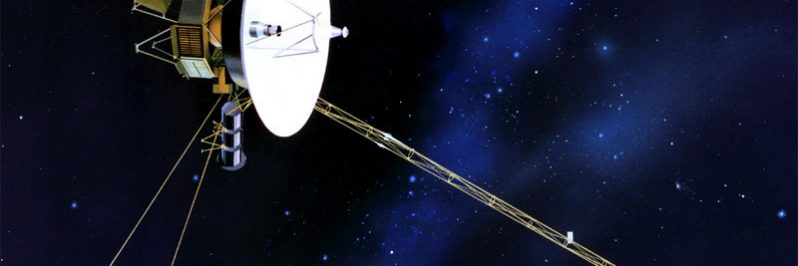NASA were able to restore communication with Voyager 1 as it travels towards the far boundaries of the solar system. Image source: NASA Photo Collection, via Flickr
Voyager 1, a NASA probe that is currently the most distant man-made object in the universe at more than 24 billion kilometres, is once again sending data back to Earth.
The spaceship is no stranger to glitches, with occasional faults that affect system data.
On November 14, 2023, the system stopped transmitting readable data, instead sending back what was described as ‘gibberish’. This was despite the probe still being able to receive and carry out commands from ground control.
NASA discovered that the cause was a malfunctioning computer chip that affected the flight data system (FDS), which left the craft unable to use its telemetry modulation unit (TMU) subsystem.
Engineers believe that the failure was likely to have occurred in a memory bank of the FDS, with a component either having been impacted with a high-energy particle or worn out due to age.
NASA began devising a coding fix that could work with Voyager 1’s computer system, which was originally built and launched in the 1970s.
The software fix was transmitted and appears to have solved the issue, with NASA releasing a statement that “Voyager 1 spacecraft is returning usable data about the health and status of its onboard engineering systems”.
“The next step is to enable the spacecraft to begin returning science data again.”
Voyager 1 launched September 5, 1977, as part of the Voyager program. It launched 16 days after Voyager 2, with Voyager 1 as the first spacecraft to enter the interstellar medium. Voyager 2 followed.
Both spacecrafts are currently in the Oort cloud, theorized to be a vast cloud of icy planetesimals (solid objects that exist within debris disks). The outer limit of the Oort cloud is thought to be the cosmographic boundary of the Solar System.
The launch in 1977 was timed to take advantage of an alignment of the planets Jupiter and Saturn, while Voyager 2 was able to encounter both the gas giants and the two ice giants, Uranus and Neptune.
Voyager 1 has sent back images of Jupiter and some of the planet’s moons, heralding the discovery of active volcanoes on the moon Io.
The probe was also able to observe Saturn and its moon Titan, providing essential data on Titan and its known atmosphere.
Voyager 1’s power banks are expected to deplete after 2025, fully ending communication with the spacecraft.





